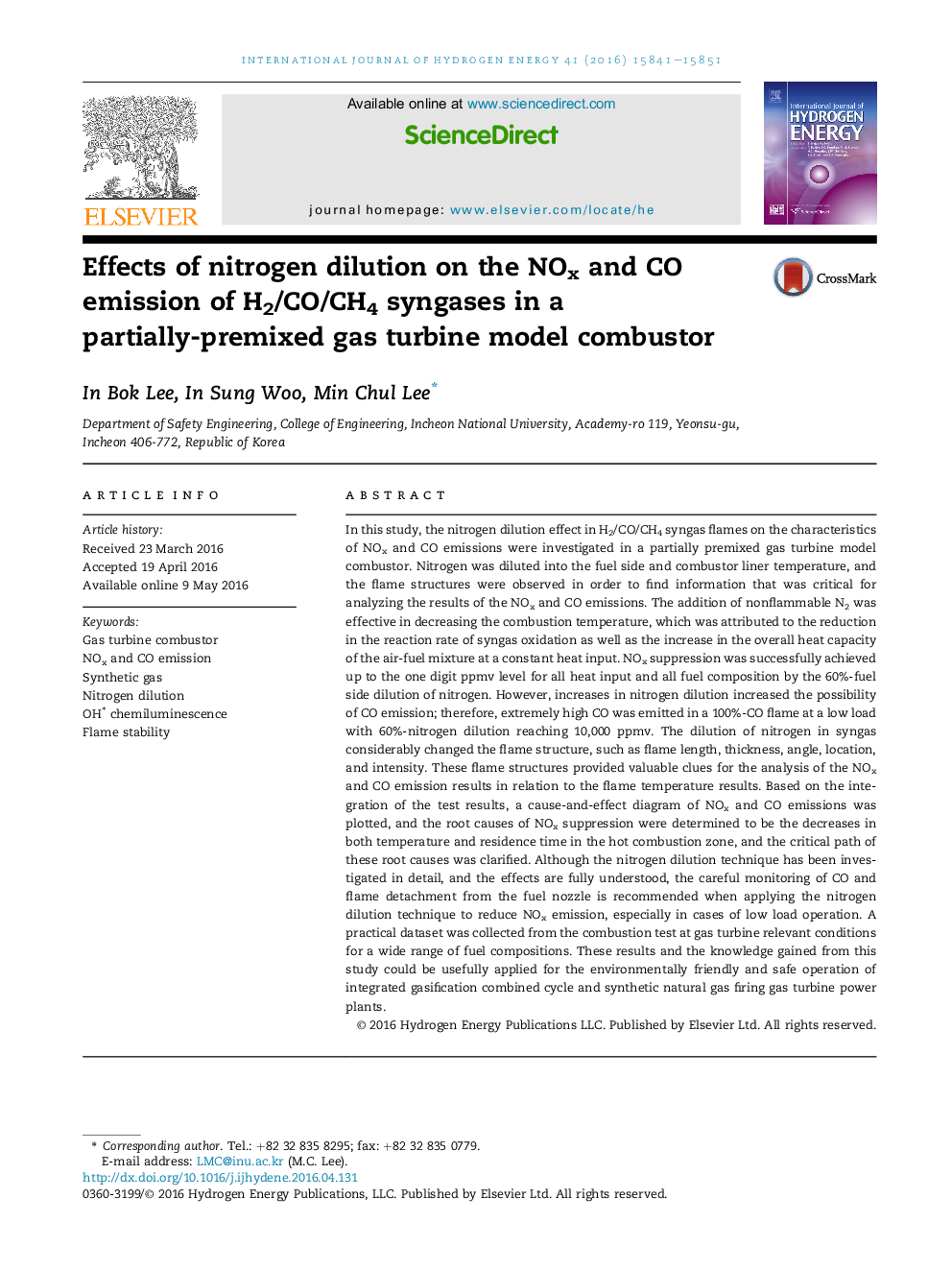| کد مقاله | کد نشریه | سال انتشار | مقاله انگلیسی | نسخه تمام متن |
|---|---|---|---|---|
| 1270312 | 1497390 | 2016 | 11 صفحه PDF | دانلود رایگان |

• Practical, useful test data of N2 diluted syngas turbine combustion are provided.
• 60% fuel-side N2 dilution effectively decreases NOx emission up to one digit ppm.
• Dilution in 100% CO flame emits much CO by changing flame shape and temperature.
• Critical path and root cause of emission are verified by cause and effect analysis.
• N2 dilution for NOx reduction needs caution in CO emission and flame stability.
In this study, the nitrogen dilution effect in H2/CO/CH4 syngas flames on the characteristics of NOx and CO emissions were investigated in a partially premixed gas turbine model combustor. Nitrogen was diluted into the fuel side and combustor liner temperature, and the flame structures were observed in order to find information that was critical for analyzing the results of the NOx and CO emissions. The addition of nonflammable N2 was effective in decreasing the combustion temperature, which was attributed to the reduction in the reaction rate of syngas oxidation as well as the increase in the overall heat capacity of the air-fuel mixture at a constant heat input. NOx suppression was successfully achieved up to the one digit ppmv level for all heat input and all fuel composition by the 60%-fuel side dilution of nitrogen. However, increases in nitrogen dilution increased the possibility of CO emission; therefore, extremely high CO was emitted in a 100%-CO flame at a low load with 60%-nitrogen dilution reaching 10,000 ppmv. The dilution of nitrogen in syngas considerably changed the flame structure, such as flame length, thickness, angle, location, and intensity. These flame structures provided valuable clues for the analysis of the NOx and CO emission results in relation to the flame temperature results. Based on the integration of the test results, a cause-and-effect diagram of NOx and CO emissions was plotted, and the root causes of NOx suppression were determined to be the decreases in both temperature and residence time in the hot combustion zone, and the critical path of these root causes was clarified. Although the nitrogen dilution technique has been investigated in detail, and the effects are fully understood, the careful monitoring of CO and flame detachment from the fuel nozzle is recommended when applying the nitrogen dilution technique to reduce NOx emission, especially in cases of low load operation. A practical dataset was collected from the combustion test at gas turbine relevant conditions for a wide range of fuel compositions. These results and the knowledge gained from this study could be usefully applied for the environmentally friendly and safe operation of integrated gasification combined cycle and synthetic natural gas firing gas turbine power plants.
Journal: International Journal of Hydrogen Energy - Volume 41, Issue 35, 21 September 2016, Pages 15841–15851